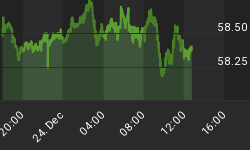"The world faces "mass starvation" following North America's next major crop failure. So says Don Coxe, one of the world's leading experts on agricultural commodities."
- Commodities Online, June 30, 2009
Mr. Coxe is concerned about global cooling shortening the growing season by a remarkable amount, and rather quickly, with soaring grain prices. Well he has the cooling right, but unless there is a huge volcanic eruption, cooling could be slow.
Today, corn closed down limit on a USDA crop report that "shocked the market". The slump encompassed soybeans and wheat, suggesting a turn in commodity markets.
Our grain index set its high at 2223 on June 1, which was about the time that Calpers pension fund reported that it was "reentering" the commodity markets.
Most commodities were likely to reach a significant high in late spring and then roll over. After mid-year the next phase of credit distress was expected to start, which, again, would have a profound effect in driving most commodities down.
Beginning on June 1, the ChartWorks noted the upside excesses and advised of a pending decline. Other "in house" financial indicators began to turn as well.
Grains soared 63% from 1374 in December to 2233, which is good action within a long bear market. The high was 2948 on June 26, 2008.
The ChartWorks called for a rally in gold, which we got. And with the right work in COT figures (which we did not get) the rally might have made it to around 990. Today's drop in silver relative to gold is a warning on the resumption of bad times.
Wrap: As noted a couple of weeks ago in Pivotal Events, slight changes in the dollar index were prompting disproportionate moves in stock and commodity markets. This suggests aggressive trading on the popular side.
The dollar index, as part of the fun out to around May, was likely to decline--and then increase. The low was 78.33 at the first of June, now it's at 80.2.
One of the features of lengthy post-bubble contractions is the bewilderment about so much hardship in a world of plenty. By plenty is meant lots of supply and little money with which to consume. It has puzzled the establishment for hundreds of years - and seems likely to continue to do so.
















